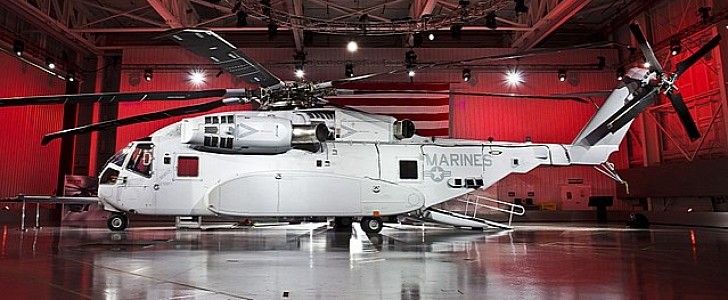To most people, a production run of nine new helicopters wouldn't be much to write home about. But the Sikorsky CH-53K King Stallion isn't just another nameless helicopter. It's the pride and joy of the United States Marine Corps. Unless you're an F-35 pilot, that is.
As you may or may not be aware, Sikorsky is a wholly-owned subsidiary of Lockheed Martin these days and has been since 2015. Their expertise in helicopter manufacturing goes back to the very genesis of the vehicle as a military weapon.
With this being the case, Sikorsky has access to Lockheed Martin production facilities, engineers, and technicians. All at a lower price per unit produced than at any point in the King Stallion's short but impactful service life to date.
“By embracing resilient, predictive logistics and sustainment, we are enabling CH-53K crews to make smarter, faster decisions, to increase reliability, and improve readiness and material availability at a reduced burden to the fleet,” said Bill Falk, Sikorsky Director, CH-53K programs.
The CH-53K will come equipped with an Integrated Vehicle Health Management System (IVHMS). Its objective is to get U.S. Marines from fixed intervals to on-condition maintenance. Potentially bringing down production costs even further as the run of nine airframes is manufactured. It's pennies saved that the Pentagon is sure to be thankful for.
All King Stallions are to be built with Lockheed Martin's backing at Sikorsky's main production facility in Stratford, Connecticut. A sign that the long-time stalwart of Southern Connecticut isn't going to be going anywhere any time soon.
The King Stallion began its Initial Operational Test and Evaluation in 2021 and that's set to finish in 2022. With other nations like Japan and Israel purported to show interest in the heavy transport helicopter, it's likely the Sikorsky plant will be busy with production for a long time to come. At around $125 million per unit, it's a deal that's bound to be lucrative. So don't be surprised if nine units suddenly becomes far more.
With this being the case, Sikorsky has access to Lockheed Martin production facilities, engineers, and technicians. All at a lower price per unit produced than at any point in the King Stallion's short but impactful service life to date.
“By embracing resilient, predictive logistics and sustainment, we are enabling CH-53K crews to make smarter, faster decisions, to increase reliability, and improve readiness and material availability at a reduced burden to the fleet,” said Bill Falk, Sikorsky Director, CH-53K programs.
The CH-53K will come equipped with an Integrated Vehicle Health Management System (IVHMS). Its objective is to get U.S. Marines from fixed intervals to on-condition maintenance. Potentially bringing down production costs even further as the run of nine airframes is manufactured. It's pennies saved that the Pentagon is sure to be thankful for.
All King Stallions are to be built with Lockheed Martin's backing at Sikorsky's main production facility in Stratford, Connecticut. A sign that the long-time stalwart of Southern Connecticut isn't going to be going anywhere any time soon.
The King Stallion began its Initial Operational Test and Evaluation in 2021 and that's set to finish in 2022. With other nations like Japan and Israel purported to show interest in the heavy transport helicopter, it's likely the Sikorsky plant will be busy with production for a long time to come. At around $125 million per unit, it's a deal that's bound to be lucrative. So don't be surprised if nine units suddenly becomes far more.





